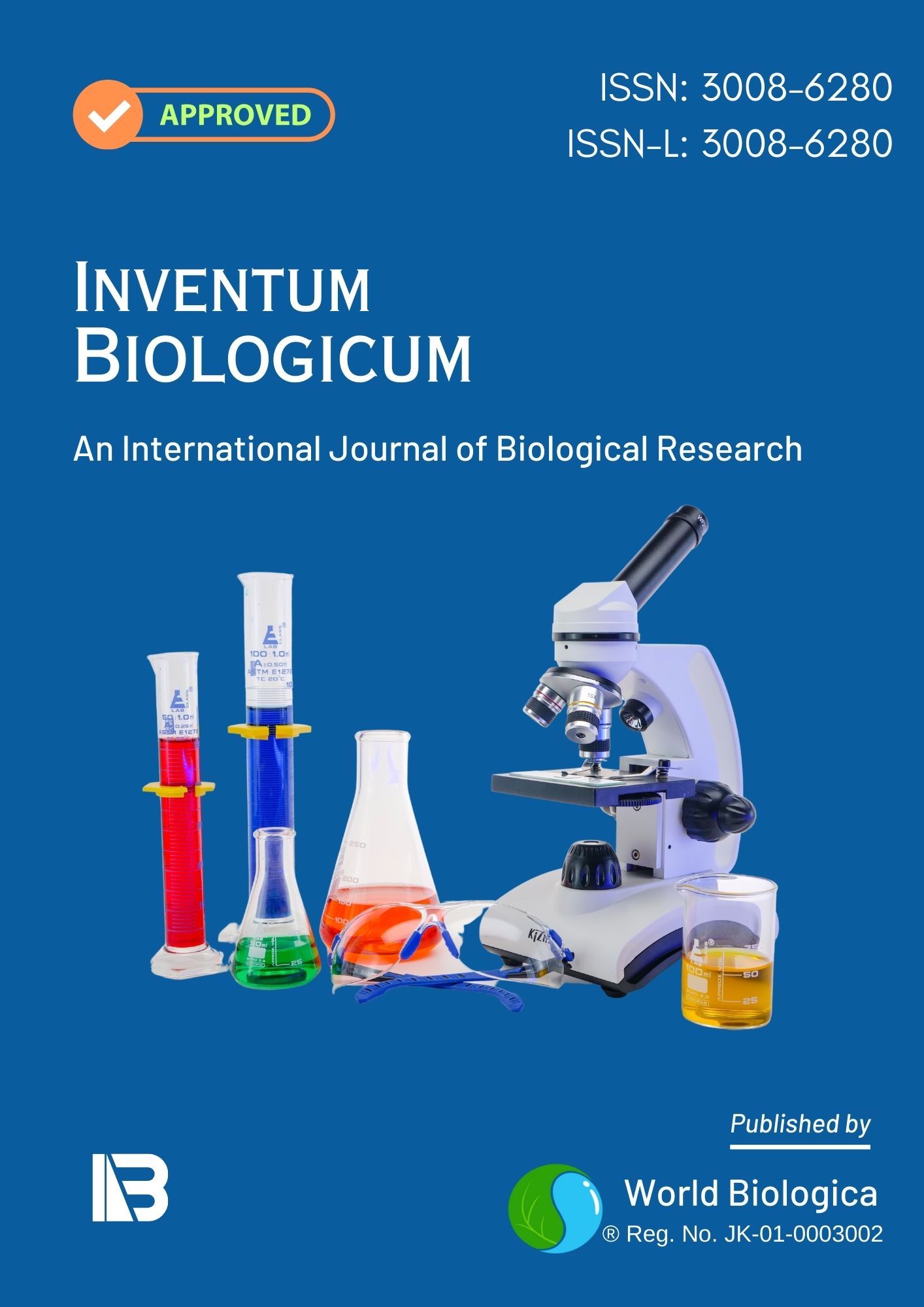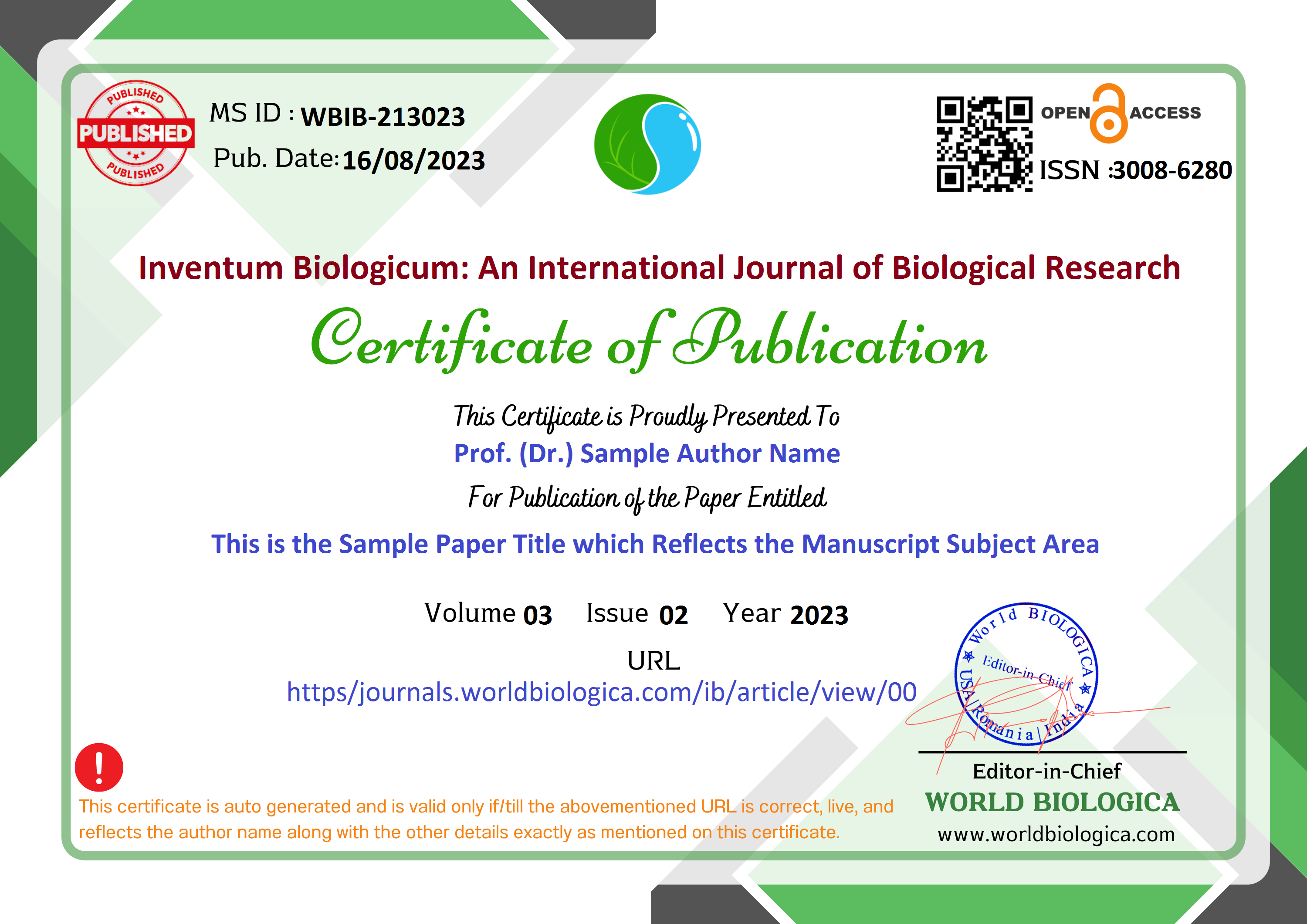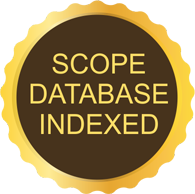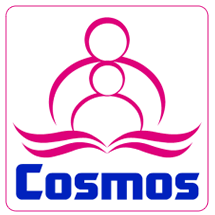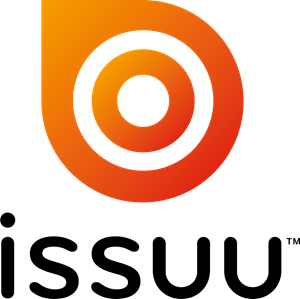Effect of Some Air Pollutants on Forage of Apis cerana indica Fab. in Semi-Field Condition
Keywords:
Apis cerana indica, Sunflower, Aerosol pollutants, Foraging, Toxicity effectsAbstract
Studies were carried out in semi-field condition to assess the effect of impact of selected aerosol pollutants viz. Agrochemical pesticides, Vehicular smoke and crop residual smoke on forage of Asianhoneybee (Apis cerana indica) visits on sunflower (Helianthus annuus). The highest average number of honeybee visits was observed in the morning followed by noon and afternoon (9 AM to 2 PM) on sunflower. The maximum number of honeybee visits was recorded 85% on control and the maximum average time spent by the honey bee noticed was 58 min. The minimum honeybee visits was and maximum average time spent noted was 40 min on the pesticide treated sunflowers. Whereas the maximum average time spent on the vehicular smoke polluted flowers was 36 min. analysis demonstrated that a significant effect between the head diameter and the number of seed settings in relation with the number of honey bee visits on all 3 polluted fields of sunflower. The foraging activity, toxicity effects, sub- lethal behavioral effects were depending upon the time of exposure to the contaminants.
Downloads
References
Abou-Shaara H.F. (2014): The foraging behavior of honey bees, Apis mellifera: a review Veterinarni Medicina, 59 (1): 1–10
Ahmed S., (2015). Air pollution and its impact on agricultural crops in developing countries. J. Anim. Plant Sci. 25, 297–302.
Beekman M, Ratnieks. 2001.Long range forage by the honey bee, Apis mellifera L. Functional Ecology; 14(4),490- 496
Bloch G, Bar-Shai N, Cytter Y, Green R. 2017 Time is honey: circadian clocks of bees and flowers and how their interactions may influence ecological communities. Phil. Trans. R. Soc. B 372: 20160256.
Brett Seymoure ( 2019) Light pollution is a driver of insect declines. j.biocon.108259
Capitani G., Papa G, Pellecchia M. and Negri I. (2021), Disentangling multiple PM emission sources in the Po Valley (Italy) using honey bees, Heliyon, 7, 2, 06194.
Cunningham M.M. et al. (2022). Honey bees as biomonitors of environmental contaminants, pathogens, and climate change. Ecological Indicators; 134, 108457.
Demares, F., Gibert, L., Creusot, P., Lapeyre, B. & Proffit, M. (2022). Acute ozone exposure impairs detection of floral odor, learning, and memory of honey bees, through olfactory generalization. Science of The Total Environment ; 827, 154342
Deori, B.B., P. Deb, H. Singha and M.R. Choudhury 2016. Traditional honey harvesting by the Pnar community of South Assam, India. Our Nature 14(1) :13-21.
Fuentes, J. D., Chamecki, M., Roulston, T. A., Chen, B., & Pratt, K. R. (2016). Air pollutants degrade floral Scents and increase insect foraging times. Atmospheric Environment, 141, 361-374.
Geetha G. Thimmegowda, Susan Mullen , Katie Sottilare , Ankit Sharma , Rishika Mohanta , Axel Brockmanna, Perundurai S. Dhandapanyc, and Shannon B. Olssona, (2020)A field-based quantitative analysis of sublethal effects of air pollution on pollinators.PNAS. 117(34), 20653–20661
James M.W. Ryalls, Ben Langford, Neil J. Mullinger, Lisa M. Bromfield, Eiko Nemitz, Christian Pfrang, Robbie D. Girling, 2022, Anthropogenic air pollutants reduce insect-mediated pollination services, Environmental Pollution, 297, 118847
Jospeh S. Wilson, Thomas Porter & Olivia Messinger Carril (2024) Are vehicle strikes causing millions of bee deaths per day on western United States roads? Preliminary data suggests the number is high, Sustainable Environment, 10:1, 2424064,
Kameela Ward Shaher and Mohammed Shakir Manjy (2020). Degradation of honey bees and environmental pollution : A Review Plant. Archives Vol. 20, Supplement 1, 339-345
Khaliq A., Javed M., Sohail M., Muhammad Sagheer (2014). Environmental effects on insects and their population dynamics. Journal of Entomology and Zoology Studies; 2 (2), 1-7
Kirk Visscher P, Richard S. Vetter, and Gene E. Robinson, (1995), Alarm Pheromone Perception in Honey Bees is Decreased by Smoke (Hymenoptera: Apidae) Journal of Insect Behavior, Vol. 8, No. 1, 1995.
Krystyna Czekonskaa, Sylwia Łopucha, Stanisław Miscickib (2023).The effect of meteorological and environmental variables on food collection by honey bees (Apis mellifera) EcologicalIndicators; 156,111140.
Leonard R. J., Vergoz V., Proschogo N., McArthur C., and Hochuli D. F., 2019 “Petrol exhaust pollution impairs honey bee learning and memory,” Oikos, 128, 2. 264–273,
Marisol Amaya-Marquez , Peggy S. M. Hill , Charles I. Abramson and Harrington Wells (2014). Honey Bee Location- and Time-Linked Memory Use in Novel Foraging Situations: Floral Color Dependency. Insects, 5, 243-269
Minoo Heidari Latibari, Gholamhossein Moravvej, Diana Carolina Arias‑Penna & Mostafa, Ghafouri Moghaddam. (2022). Effects of carbon monoxide, nitrogen dioxide, and fine particulate matter on insect abundance and diversity in urban green spaces.Scientific Reports :12,17574
Morfin, N.; Goodwin, P.H.; Correa-Benitez, A.; Guzman-Novoa, E.( 2019). Sublethal exposure to clothianidin during the larval stage causes long-term impairment of hygienic and foraging behaviours of honey bees. Apidologie, 50, 595–605.
Owens C.S , Precillia Cochard , Joanna Durrant , Bridgette Farnworth , Elizabeth,Perkin K.,
Pallavi J, Vijayan P. and Senthilmurugan S.,2024. In vivo and Laboratory Studies of Tetracycline Prevention of Foulbrood disease of Apis cerana indica Fab. and its Effects on Honey. W.J.A.R & R, 24(01), 388–393
Prado A, Requier F, Crauser D, Le Conte Y, Bretagnolle V, Alaux C. (2020). Honeybee lifespan: the critical role of pre-foraging stage. R. Soc. Open Sci. 7: 200998.
Raza, M.H., Abid, M.;Faisal, M., Yan, T., Akhtar, S and Adnan,K.M.M. (2022) Environmental and HealthImpacts of Crop Residue Burning: Scope of Sustainable Crop Residue Management Practices. Int. J. Environ.Res. Public Health, 19, 4753.
Rodica Margaoan, Giulia Papa, Alexandru Nicolescu, Mihaiela Cornea Cipcigan Mustafa Kösoğlu, Erkan Topal, Ilaria Negri (2024). Environmental pollution effect on honey bees and their derived products: a comprehensive analysis. Environmental Science and Pollution Research.
Silva DP, Moisan-De-Serres J, Souza DC, Hilgert-Moreira SB, Fernandes MZ, Kevan PG, Freitas BM (2013): Ef- ficiency in pollen foraging by honey bees: time, mo- tion, and pollen depletion on flowers of Sysirinchium palmifolium (Asparagales: Iridaceae). Journal of Pol- lination Ecology 11, 27–32.
Stanley, D. A., S. Msweli, and S. D. Johnson. (2020). Native honeybees as flower visitors and pollinators in wild plant communities in a biodiversity hotspot. Ecosphere 11(2)
Sushil SN, Stanley J, Hedau NK, Bhatt JC (2013): Enhanc- ing seed production of three Brassica vegetables by honey bee pollination in north-western Himalayas of India. Universal Journal of Agricultural Research 1, 49–53.
Trimmer, P.C., Houston, A.I., Marshall, J.A.R.; Mendl, M.T., Paul, E.S., McNamara, J.M. 2011, Decision-making under uncertainty: Biases and Bayesians. Anim. Cogn. 14, 465–476.
Van der Sluijs JP, Simon-Delso N, Goulson D, Maxim L, Bonmatin JM, Belzunces LP. 2013 Neonicotinoids, bee disorders and the sustainability of pollinator services. Curr. Opin. Environ. Sustain. 5, 293– 305.
Varol, E. and Yücel, B (2019), The Effects of Environmental Problems on Honey Bees in view of Sustainable Life, Mellifera, 19(2):23-32.
Venkataramegowda, Sivaram. (2021). Honeybee Flora and beekeeping in Karnataka state, India. Proc. 37th Int. Apic. Congr., 28 Oct – 1 Nov 2001, Durban, South Africa
WHO, Data from Ambient (outdoor) air quality database, by country and city. WHO Global Ambient Air Quality Database. Available at https://www.who.int/airpollution/data/cities/en/. Accessed 4 July 2019.
Yerushalmi S, Green RM. 2009 Evidence for the adaptive significance of circadian rhythms. Ecol. Lett. 12, 970– 981.
Downloads
-
Download PDF
 Abstract Views: 50,
Abstract Views: 50,  Download PDF: 62
Download PDF: 62
Published
How to Cite
Issue
Section
License
Copyright (c) 2024 Inventum Biologicum: An International Journal of Biological Research

This work is licensed under a Creative Commons Attribution-NonCommercial-NoDerivatives 4.0 International License.


